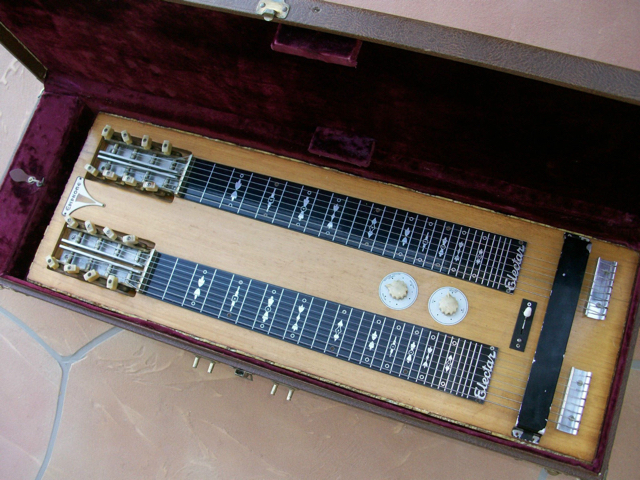
Close-up #33: 1947 Duo Console
SN 100007
Here we have an electric Hawaiian lap steel guitar with two necks – photos were found in some "for sale" listings on the web.
Epiphone was arguably the first major manufacturer to introduce a double-neck electric lap steel model: The Electar Rocco, developed in 1936 for popular player Anthony Rocco – pictured below in a promo photo.
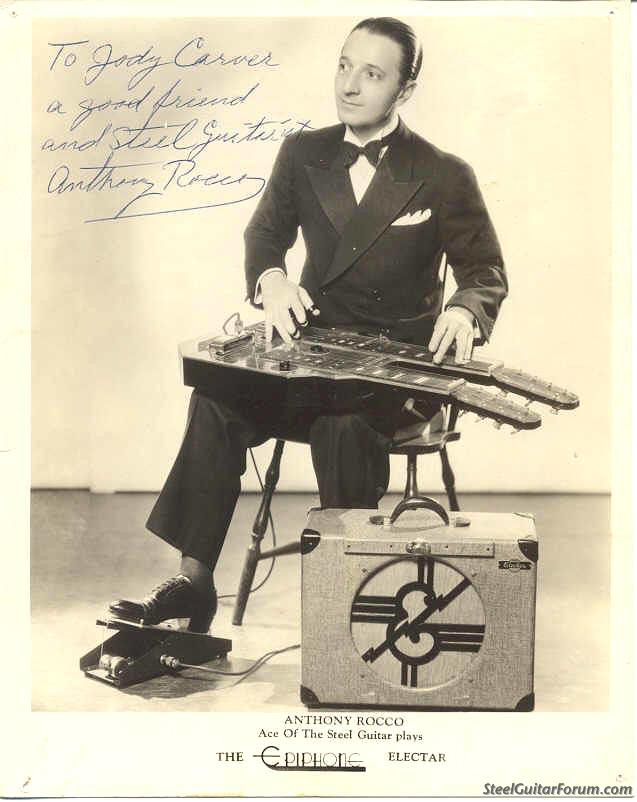
By 1939 Epiphone started to offer console-style electric steel guitars which were not meant to rest on the player's lap anymore but standing on its own legs like a table. The two-neck version was named "Duo Console" – see picture from the 1942 catalog below.
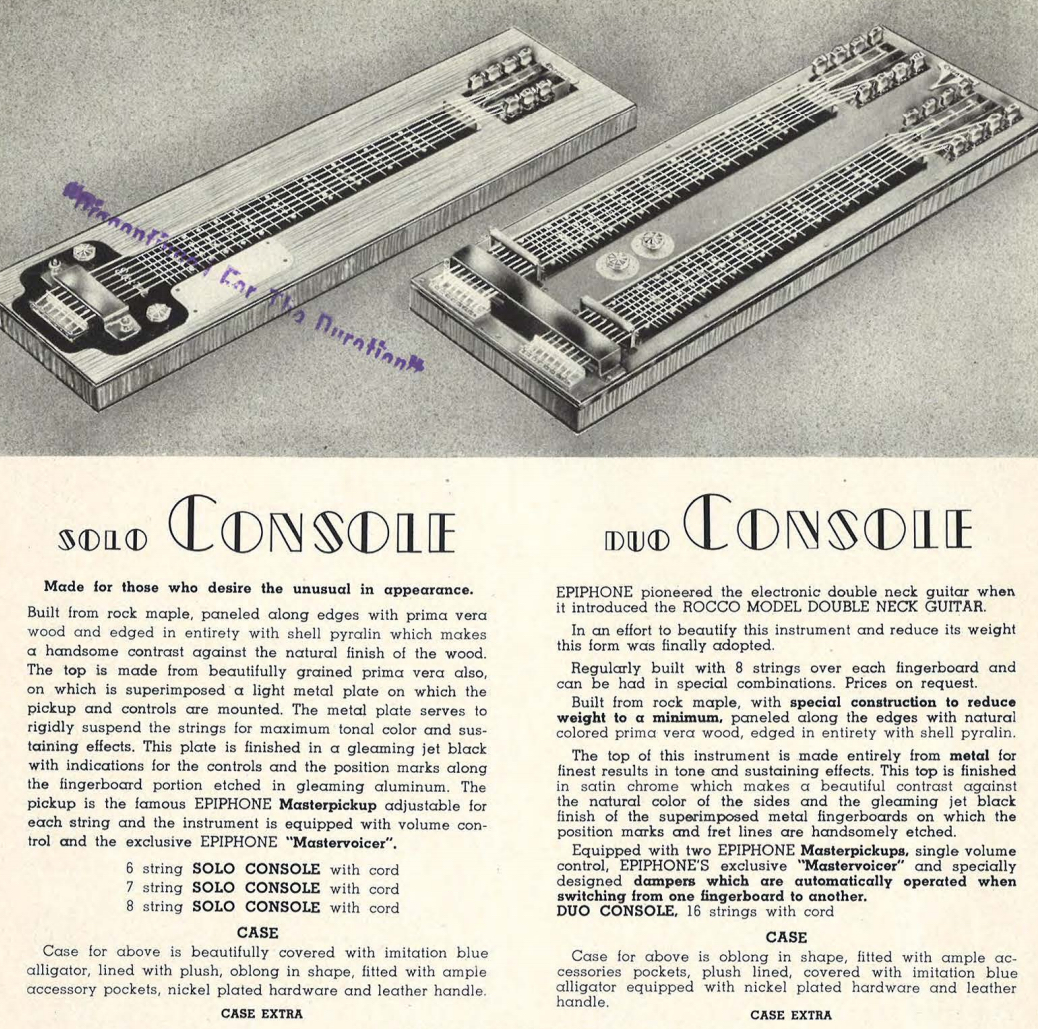
The example featured here looks very similar, however there are some differences: While the catalog describes a "satin chrome" metal top, this example is topped with a (primavera?) wood veneer. Note that the tortoise-style "shell pyralin" binding has mostly disintegrated – a common condition.
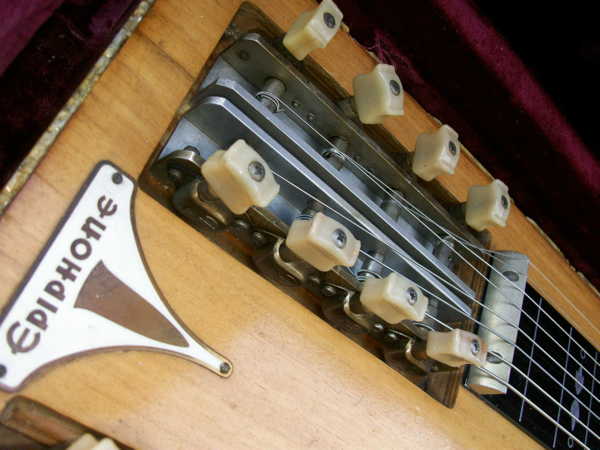
Furthermore, the "automatically operated" string dampers as cataloged have been replaced by a pickup selector switch. The two pickups are hidden under one long metal cover.
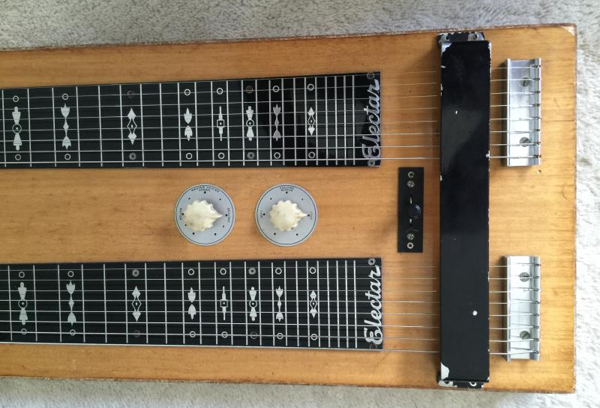
So, when was this Duo Console manufactured? With Epiphone's electric instruments, the type of pickup(s) and control knobs often give a hint: Here we have 8-string versions of the "Master" pickup with large adjustable pole pieces. This pickup type was introduced after WW2, and in use on all higher-end electric models until replaced around 1948 by the "Tone Spectrum" pickup. Those white, serrated control knobs are typically seen in the 1946-1949 period.
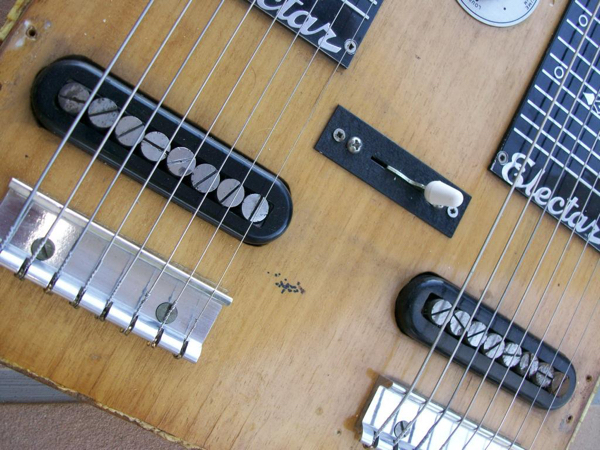
Below a view of the underside ...
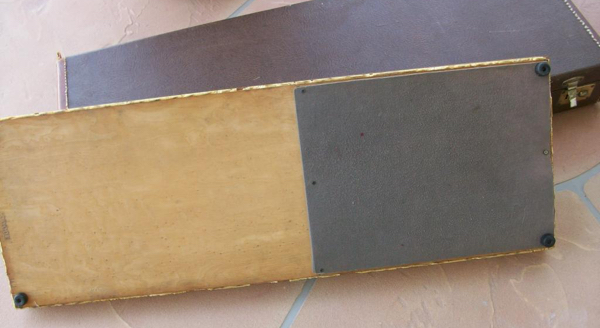
... where a number is stamped at the headstock end: "100007" – an Epiphone SN range that doesn't appear in any of the common vintage instrument sources and books (Gruhn, Carter, Fisch/Fred, etc)!
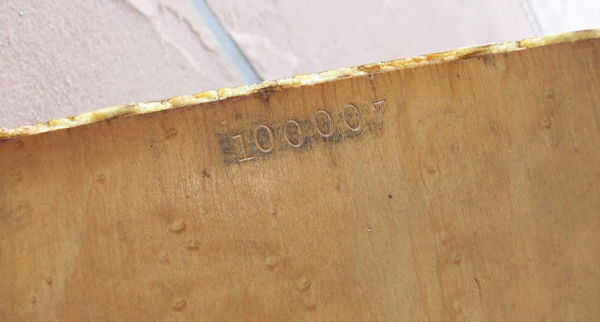
However in our Registry we have documented a number of Duo (and Solo) Console examples with SNs in the low 100000s range – obviously all made in the 1946-1949 period when Epiphone electrics typically had a SN system with model-coded prefix.
Thus we conclude that "Console" models were coded with the prefix "100" – followed by a 3-digit serial suffix as with other electric models. 100007 is the lowest registered SN of a post-war Console. While the 1946 price list marked the Console models with asterisks indicating an unavailable model, the 1947 list reinstated prices – $215 for the Duo version. Therefore we guess that this instrument was likely made in 1947.
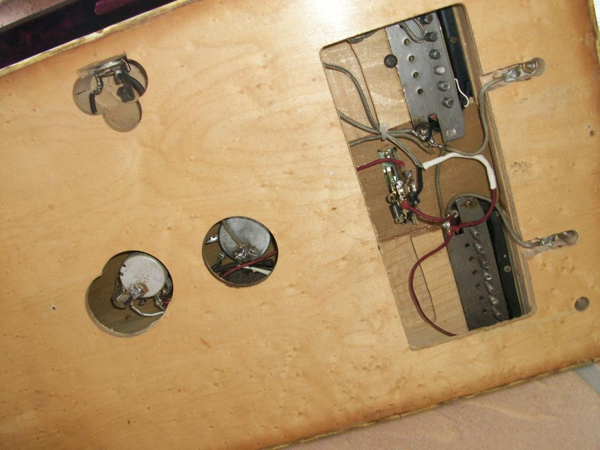
With the panel on the underside removed the openings cut into the body to house the electric components become accessible. Below one of the potentiometers which appears to be original to the instrument.
After WW2, US-made electric components generally were marked by a code which identified the manufacturer and production date – the so-called EIA (Electronic Industries Alliance) source and date code: in our example the 6-digit number "140632" (see photo below). Now, the first 3 digits are a code for the manufacturer – "140" standing for the Clarostat company (see list). The last 3 digits "632" represent a date code – "6" standing for "1946", and 32 indicating the week of that year. So this potentiometer was manufactured not before August 1946. Which makes sense to be found on an instrument estimated to have been assembled in 1947.
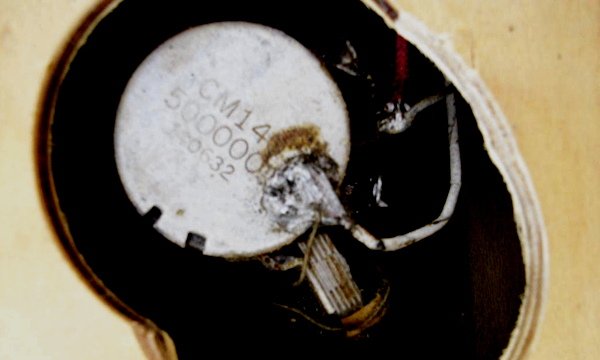
(Jan 28, 2017)